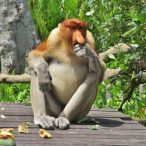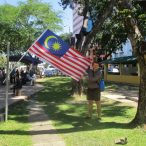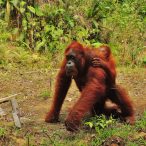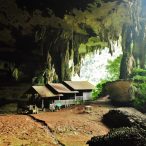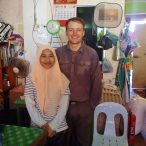Malaysia

Official name: Malaysia
Population: 32 315 000
Area: 330 803 km²
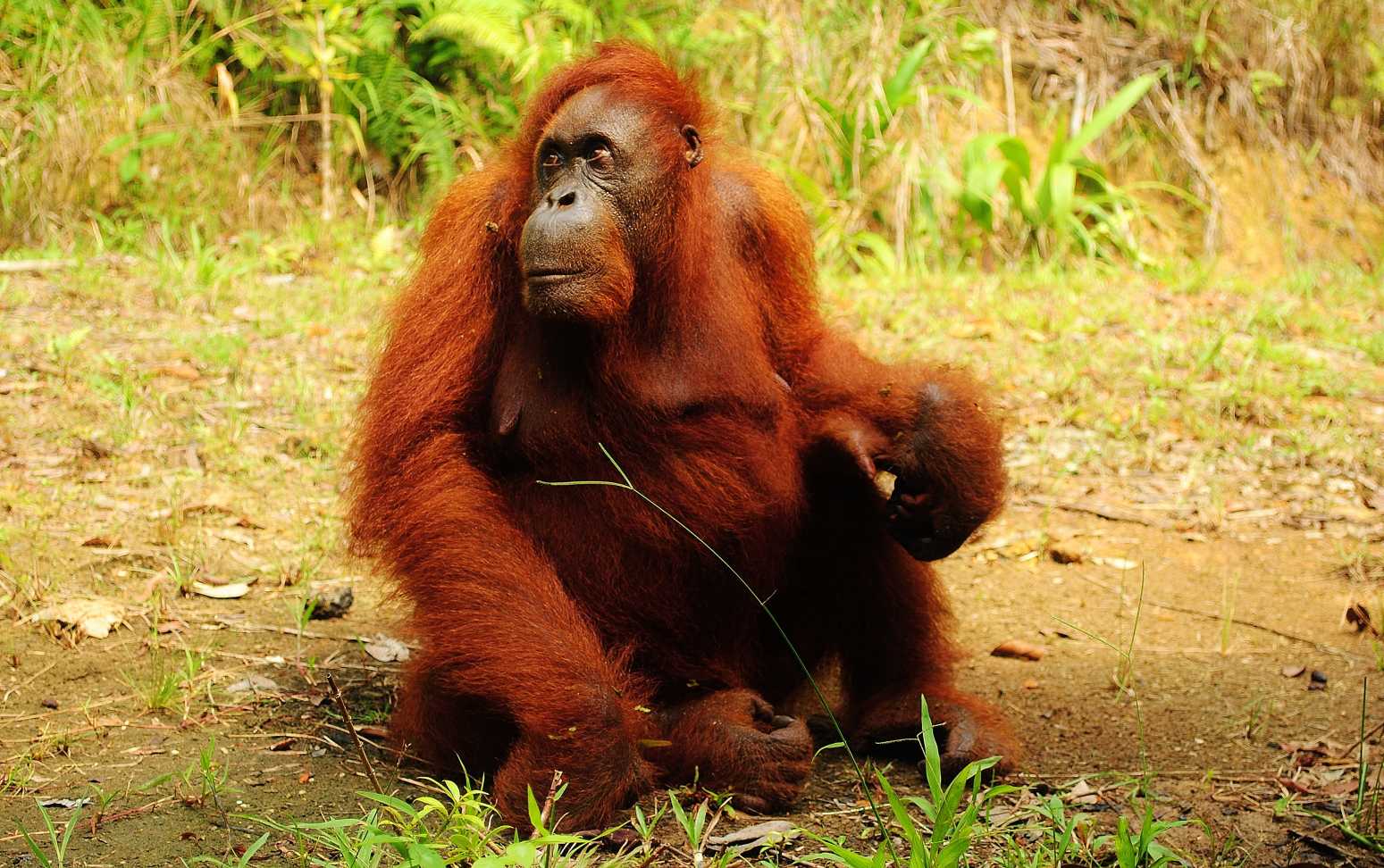
Gallery
Malaysia – tourist attractions, the present times, history of Malaysia.
Tourist attractions of Malaysia
Malaysia is divided into the West (Peninsular) and the East (Malysian Borneo), and it is cut by the South China Sea. The Malay Peninsula, as well as the states of Sabah and Sarawak offer a lot of tourist attractions.
There are many national parks in West Malaysia, where we can see untouched tropical forests, beautiful mountains, jungles, tea fields and the post-colonial architecture. West Malaysia is also a region of paradise islands, long beaches and palm trees. All those things go together with modern and dynamically growing country, what we can see for example we can in the capital of Malaysia – Kuala Lumpur. On the other hand Malacca,which used to be the biggest port of South East Asia, is reach in many post-colonial sights, and it is also a great place to try cuisine from many parts of the world. I was also impressed by the island of Penang, which I especially recommend, as the cultural-culinary trip.
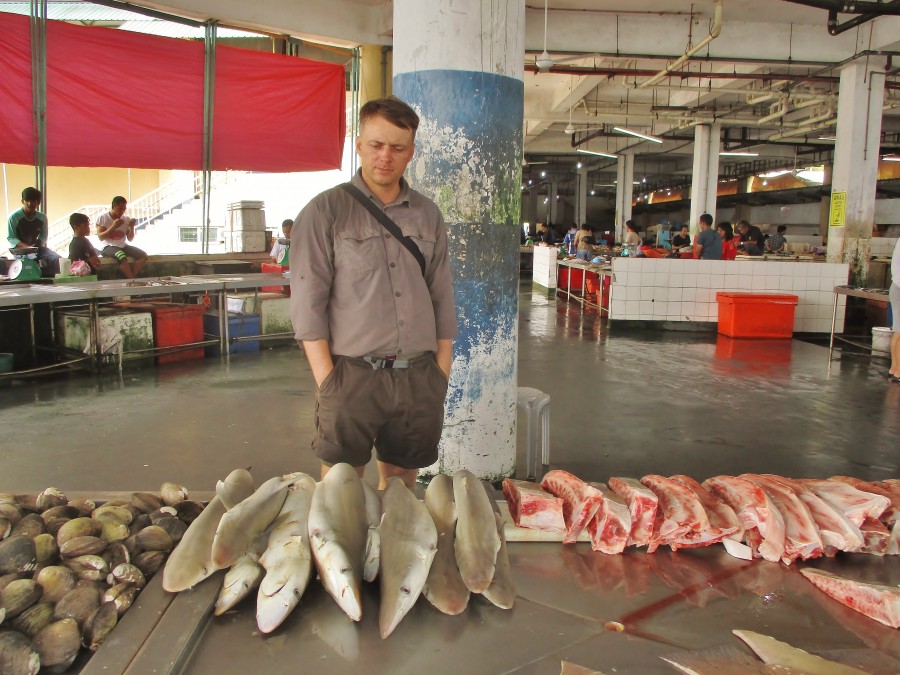
At a fish market in Sandakan. Malaysian Borneo.
Not to be missed is also the Marine National Park of Perhentian islands, where white sandy beaches, turquoise water, sea turtles and schools of colourful fish should keep us busy for few beautiful days. I also like the Taman Negara National Park, where I went for a two day expedition to the jungle, during which I slept in a cave and fought blood firsty leeches. It was a walk in heat and high humidity, and although I found myself in a mud a few times, I was happy to be close to the nature. I also highly recommend a trip to the Pulau Tioman island, rich in beautiful beaches, and a jungle in the middle of the island. I realized here, that Malaysia offers something what Thailand probably cannot. In Pulau Tioman I had the whole jungle and the beaches only to myself, and Thailand in places like this is quite overcrowded.
In Western Malaysia I also recommend Cameron Highlands, with its cooler climate, thanks to which there are tea fields and moss forests with insectivorous plants. It is a very good place for walking and tasting tea from the Boh plantation.
On the other hand Malysian Borneo is mostly about a close contact with the nature and exotic animals. In the states of Sarawak and Sabah there are a lot national parks, full of life and the biggest caves of our planet. There are beautiful waterfalls, wild animals, mountains and paradise beaches with turquoise waters. Borneo and its national parks need a more in detail exploration, to not to miss any of the natural beauty. I crossed many different jungles, I climbed high peaks and I crossed rivers full of crocodiles.
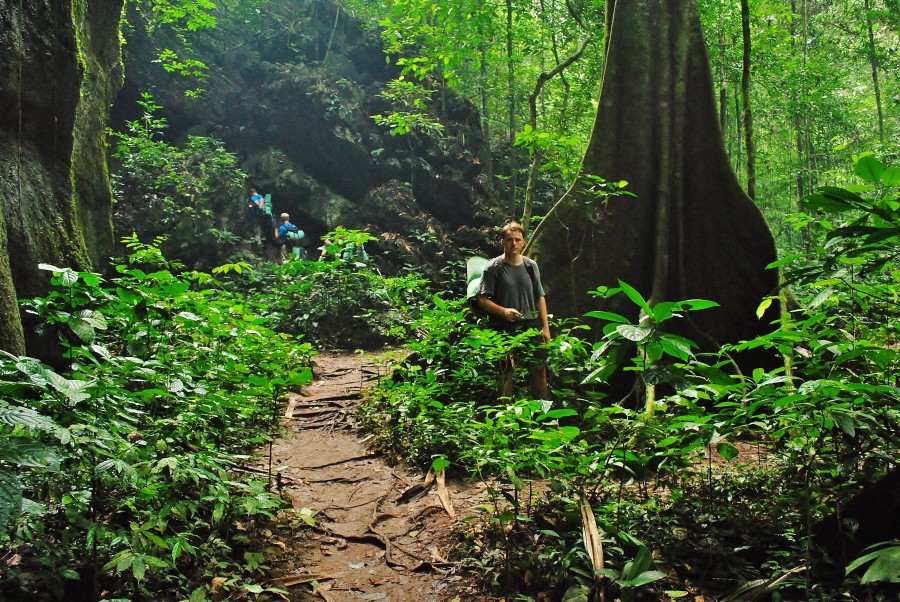
During the jungle expedition in the Taman Negara national park. West Malaysia.
The trees of Malaysia are also very beautiful, because they have very wide and twisted bases. Travellers will have to get used to the tropical climate, as it is tiring in the beginning, but the adventurous Malaysia compensates hardship at the end. I also liked the ancient architecture of Malaysia. Those are tall, wooden houses covered with straw and decorated with palm mats, objects of every day use, and local art. I have to admit that all the old shelters, coconut spoons, and bamboo blow pipes for hunting impressed me quite a lot. I definitely liked them more than modern sky scrappers made of glass, with their boring shops selling shoes and perfumes. When I was in a jungle, once I handled a pit viper on a stick, and another time when I slept in a cave, bats slept upside down just above my head.
A nice addition is also the Orangutan Rehabilitation Centers, where we can see them practically in natural surroundings. In the state of Sarawak it is Semengogh, and in the state of Sabah it is Sepilok. I recommend both places.
In the state of Sarawak I was for example in the Bako National park, where after a cruise among the dramatic rock formations I reached the kingdom of proboscis monkeys, wild pigs and green vipers. I also recommend huge caves in the Niah National Park, a jungle expedition in Mulu Park, and the largest flower in the world – Rafflesia – in the Lambir Hills Park. Sarawak is also very popular because of the culture of the Borneo people, that can be experienced in the Damai cultural village.

Malaysian patriotism in Kuala Lumpur.
In the state of Sabah, in addition to contact with exotic animals, I recommend mainly marine national parks, such as the Tunku Abdul Rahman, and the Semporna archipelago. I also loved the beaches of Tip of Borneo, and the Mari Mari cultural village. The rest of the beauty of our trip will be completed with exotic fruit, palm trees, picturesque views and beaches, as well as dinners on the Sandakan coast. In addition, one can also dive with sea turtles, what I did many times.
Malaysia – the present times
Economy:
Malaysia has always been one of the fastest growing economies of Southeast Asia, and comparing to the neighbouring countries it is definitely a leader. Among many other things Malaysia produces palm oil, computer disks, rubber and timber. Malaysia also produces a car called Proton, and also tourism has great condition to develop further. Unfortunately, even though Malaysia has perfect conditions to gain profits from tourism, it is in danger because of pollution and logging.
Apart from that Malaysia also has Malacca, one of the biggest trade ports, which apart from production of the above things is the key to the Malaysian economy. Malaysia was also the biggest producer of palm oil, rubber and tin, for many years in a row. Well known is also the national carrier Malaysia Airlines, and few private carriers, like for example Air Asia. Other infrastructures, like for example the network of roads, or overground and underground rail are also well developed.
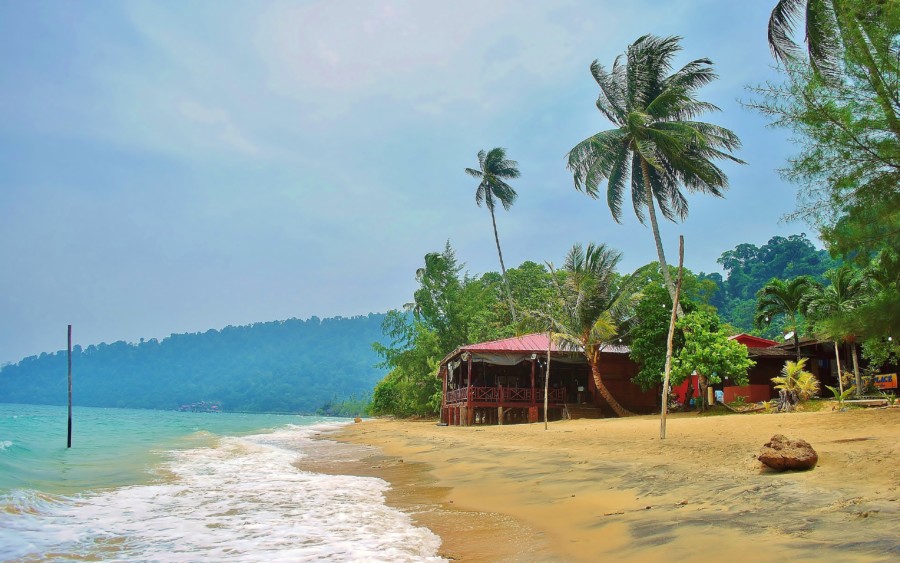
Beach in the Pulau Tioman island. Malaysia.
Education:
Literacy level stands at a level of 88%, what I have to admit that it is a bad result, although in Pakistan for example only 55% can read and write. Education in Malaysia stands at a decent level and primary level is compulsory.
Health:
Malaysian healthcare is at a high level and it`s one of the best in Asia. Not many Asian countries have such good hospitals and doctors as Malaysia. When it comes to HIV, a daily average is 10 new infections (Vietnam 40-50), and there are more than 90,000 infected, of which over 12,000 result in death due to AIDS. Besides, there are many other tropical diseases in Malaysia which require vaccination.
Culture/Religion:
Population of Malaysia is about 29mln, and 20mln lives in the peninsula which is the economic and cultural centre of Malaysia. It is also difficult to not to notice, that Malaysian society is very mixed. Malays are the majority (60%), Chinese (26%), Indians (7%). Also religion and economic position are tightly connected with ethnicity. Chinese are the richest, Malays are the strongest at politics, and Indians are the poorest. Over 61% practices Islam, almost 20% practices Buddhism, over 9% Christianity, almost 6,5% Hinduism, and the rest practice far eastern philosophies like Taoism and Confucianism. It is also interesting that Malaysia promotes religious freedom, what brings certain laws and limits.
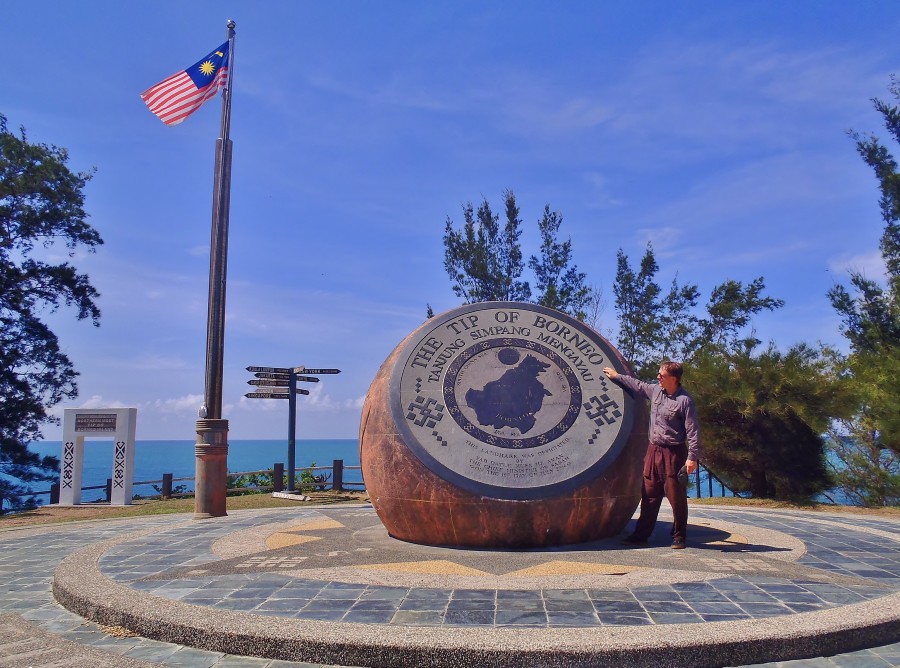
Tip of Borneo, Sabah. Malaysian Borneo.
When it comes to civil matters, Muslims are subject to Sharia law, which at the same time excludes non-Muslims. However this religious freedom has its limits because Israeli nationals are not even allowed into Malaysia. A man from my hostel also told me that Jews arriving here on other passports should not advertise their faith, (However I as a Catholic can advertise it freely everywhere). Malaysia is therefore a Muslim country, and this religion is widely promoted by building huge mosques, even in areas where Muslims are a minority. On one hand I can understand it because native Malays are Muslim and all the other races are the incoming species. I also noticed that all bus station there are prayer halls for Muslims. A lot of dishes are prepared according to Muslim recipes, and on many ceilings there are arrows pointing direction to Mekka, the house of Allah. Generally all communities live in harmony, although from time to time there are problems.
Malaysian culture, the same as art, cuisine and language are mixed to the same degree as the society. We can find mosques, churches, Buddhist and Hindu temples, and arts and cuisine of all those cultures. Apart from Malay language which is the official one, and apart from national languages of different racial groups, English is also widely used.
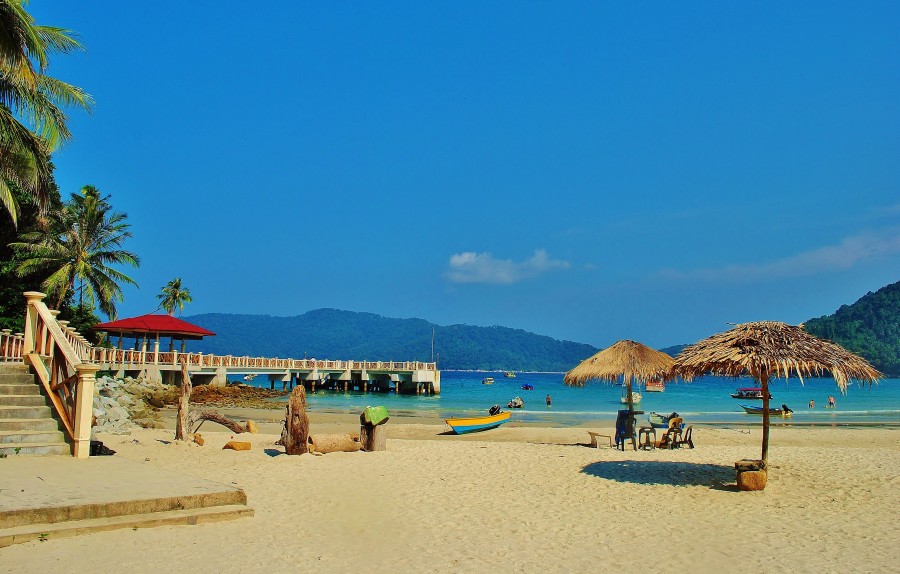
A beach on the fairy tale Perhentian Islands. Malaysia.
It is also important that Malaysian citizens from Borneo have a note of it in their passports, and tourist entering Sabah or Sarawak get a new visa too. This is a clear proof, that regardless of promoting the multicultural society (which I treat as an utter nonsense), Malaysia is divided not only geographically, but also culturally, lawfully and racially. In addition to that Malaysia has also a big problem with illegal immigrants, which it deports quite efficiently, what I can`t say unfortunately about Europe.
Media:
I wouldn’t count on press freedom in Malaysia, as all newspapers are controlled by the government. I think they’ve learnt that from the UK?! There is also a big press division in Malaysia, into the peninsular one as the most important and the eastern as less important. On the press freedom index Malaysia has recently moved from 143th place to 122nd – based on 196 countries and territories.
Environmental problems:
Malaysia is a country with rich natural beauty and animals living among it, as I described above in tourist attractions. The biggest problem is deforestation, and it is to such an extent that 80% of forests in Sarawak have already been cut. Due to lack of trees in Borneo floods are becoming more dangerous. In addition, 60% of the trees have been cut out of West Malaysia, what means that if the situation does not improve, apart from national parks tropical forests of Malaysia will cease to exist. Less forests also mean less natural habitat for wild animals, although hunting wild animals, such as tigers for example are yet another reason. Deliberate destruction of the environment is also reflected in huge reflection on marine animal. For example, the population of critically endangered leather back turtles has fallen by 98% since 1950. In Malaysians also do dynamite fishing, what does not only kill fish but also their ecosystem. However even taking into account all the above, the Malaysian Government puts greater importance to the industry rather than protecting the environment.
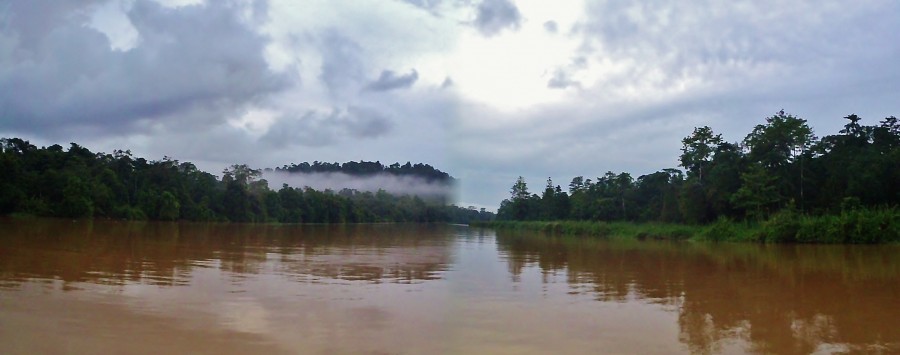
The Kinabatangan River, popular because of the natural beauty and animals living there. Sabah, Malaysian Borneo.
On the other hand forests cover about 65% of Malaysia, and some of them are believed to be 130mln years old. Malaysia has a natural wealth, which the richest European countries do not even dare to dream of. Today in Malaysia, there are 28 national parks, including 23 in Borneo.
History of Malaysia
On the other hand forests cover about 65% of Malaysia, and some of them are believed to be 130m years old. Malaysia has a natural wealth, which the richest European countries do not even dare to dream of. Today in Malaysia, there are 28 national parks, including 23 in Borneo.
Looking in to the past, Malaysia has always been in a very beneficial geographical location of Southeast Asia, because it`s always been an ideal trading centre between east and west. We can even say that since the very beginning, development of Malaysia has always been dependant on sea, and the culture of Malaysia has always been shaped by other cultures. There is written evidence that first inhabitants of peninsular Malaysia came from China and Tibet about 5000 years ago. They began settling not only in the peninsular part but also in Borneo, Sumatra and the Indonesian archipelago. In the first century AD they developed regular commercial contact with China and India, what resulted in a strong influence of Buddhist and Hindu beliefs. From the XVII century the largest trading port was the one of Melaka, which by using its geographic location over time grew in strength and became a great financial success.
Then merchants from China, India and Arabia stared arriving to Malaysia. Muslim Indians and Arabs brought with them strong Islamic influence and the first ruler of Malacca converted to Islam, which later spread also to Borneo and Indonesia. Malacca achieved such a success that it was converted to the Sultanate and soon Europeans became interested in it. At the end of medieval times came the Portuguese, who conquered Malacca and during their rule they began to build Christian missions. After about 130 years the Dutch arrived and then the Britons after the 60 years after them, who competed with the Dutch for domination of the region. Finally in 1824 they signed an agreement which divided South-East Asia. The British had control over peninsular Malaysia, and the Dutch over Indonesia, although the area of ??north-eastern Borneo was ruled by the Sultan of Brunei. These were really hard times for Borneo, especially that in 1839 the Japanese invaded. Returning to the Peninsula, in the second half of the XIX century Kuala Lumpur began to become an increasingly important trading centre, and in 1896 KL became the capital of the British Malaya. During World War II in 1941 the Empire of Japan invaded and occupied the region for four years, what was probably the hardest experience for the Malays in the entire history. (From my history lessons and travel experience it becomes clear to me, that the Japanese didn’t have equal when it comes to cruelty). After the war there was a growing determination of gaining independence. As a result of merging the independent Malayas in 1957, the former British colony of Singapore and the former British protectorate in the north of Borneo – Sabah and Sarawak, resulted that in 1963 Malaysia was formed. Two years later Singapore withdrew from the union to form a separate, independent country.
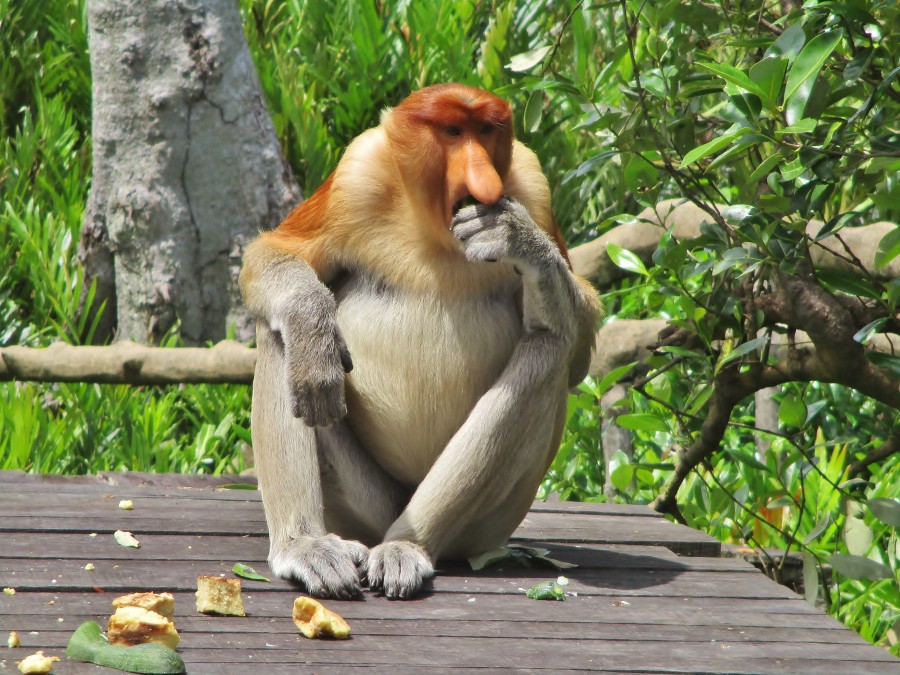
Proboscis monkeys are one of the many beautiful symbols of Borneo. Malaysia.
After the war there was a growing determination of gaining independence. As a result of merging the independent Malayas in 1957, the former British colony of Singapore and the former British protectorate in the north of Borneo – Sabah and Sarawak, resulted that in 1963 Malaysia was formed. Two years later Singapore withdrew from the union to form a separate, independent country.
Map
Location
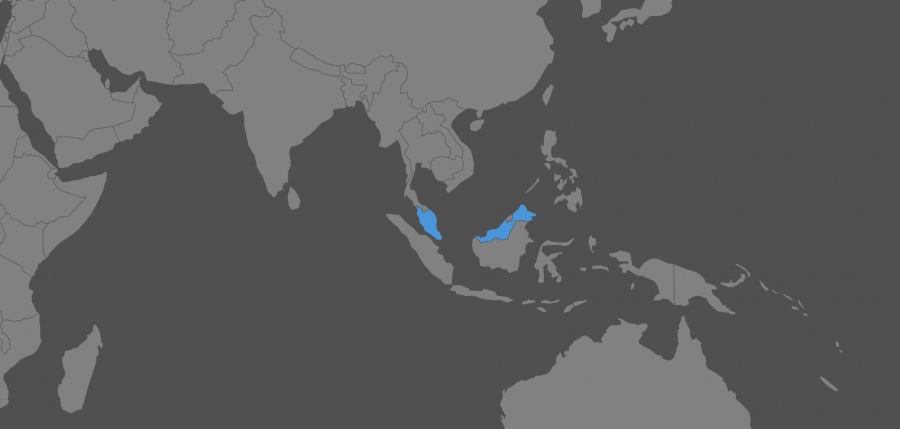
Practical information
Tourist Visa: For each border crossing we receive a free stamp entitling us to a three-month stay. There are however more exotic stamps when crossing into Sabah and Sarawak.
Safety: safe country. Please take into consideration that this is an Islamic country. The rules for non-Muslims are very liberal. There are reports of petty thefts, but also kidnappings and attacks by Borneo Islamic organizations from neighboring countries. I would however not worry about it at all, because I travelled the whole of Malaysia, from the West to Borneo, I crossed jungles, caves and cities and I never had any problems.
Moving around the country: Transport is very good, as well as the condition of the roads. In Malaysia there is a very well organized bus network, although hitchhiking works well too. On the islands, both in Western Malaysia (Malay Peninsula), Eastern Malaysia (Borneo), and the federal territory of Labuan, motor boats depart regularly. Boats depart few times a day for such destinations as islands in the Semporna archipelago in Sabah, Bako National Park in Sarawak and the Tunku Abdul Rahman marine park, also in Sabah.
Due to the extensive location of Malaysia, there is a well-organized network of air connections in the country. From the Peninsular Malaysia to Borneo it is possible to get only by plane. The cheapest airlines are Air Asia, although there are also Cebu Pacific (in the Philippines), and small Mas Wings airlines; but only in Borneo.
Prices: (in 2018 when £1 = 5.5RM) Malaysia is more expensive than the neighboring Thailand or the Philippines, but it is not as expensive as Japan. You can spend a nice holiday in this country for relatively little money. For hostels in dorms, I paid an average of 20-25RM, although sometimes only 15RM. I usually paid 30RM for single rooms, although there are rooms for 50RM and more. In Borneo for example, I lived in a beach house that cost me 40RM a night. By far the cheapest place to sleep in Kuala Lumpur is Chinatown, where for 25RM you can spend the night in the dormitory. The prices in other places are similar.
Transport is a little more expensive. For the boats from Kota Kinabalu to the Tunku Abdul Rahman marine park I paid 23RM return for one island. If, on the other hand I wanted to see three islands in one day, then I paid 43RM. Transport by bus from KK to Ranau (via Kinabalu Pak) cost me 25RM. From Sandakan to Labuk Bay, where I saw proboscis monkey, I paid 40RM return. I paid 50RM from Semporna to Tawau, even though the bus ride took only 1 hour. Usually for 3 hours I paid 30RM, although from Kota Kinabalu to Kudat (3h), I paid 25 RM. Transport prices in Western Malaysia are slightly more expensive, but not much. For example, from the bus station in Kuala Lumpur to the Cameron Highlands, the ticket costs 35RM, for 3.5 hours of driving. Unfortunately, the metro in Kuala Lumpur is not cheap, because for a train from the airport to the centre I paid 50RM, and a 2-day ticket costs 75RM. A single fare ticket costs about 3-4RM.
For several years, there has been also a “grab”, or taxi, where it is possible to check the price of every ride on the website before ordering it. For example, a grab ride from Tawau to Tawau Hills Park cost me 36RM – https://www.grab.com/my/.
Entrances to places of interest are a little more expensive, because in Malaysia operates on the “white man’s price”, what means that Whites pay more. Mari Mari cultural village cost me 150RM, but it was a half day trip with transport and meals. Lok Kawi Wildlife Park was 20RM, and Gumantog cave 30RM. In Sepilok I paid 30RM for an entry to the black bears. Entry to the Orangutan Rehabilitation Center costs 30RM for White people, and only 5RM for Malaysians. Climbing Mount Kinabalu cost me 1180RM with lodging and meals. Generally, it is more expensive for Whites. For example, entering the skybridge in Petronas Towers costs 80RM.
Market stalls with food in the bazaars offer dishes for a few dollars. Exotic fruits can be purchased for a few ringgit. I think that the cost of living in Malaysia without constant transport and entries to the places of interest is about 50RM a day. Travel costs become more painful we start to pay for entries, continuous transport and flights. I calculated that a daily stay in Malaysia cost me on average about £ 25- £ 30 a day, which is still not bad.
Climate: a mixture of equatorial humid, hot and monsoon. The average air temperature is above 20°C, although in April and May to about 36oC. During rainy season there are large rainfalls, particularly in Borneo and the west coast.



